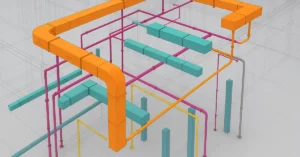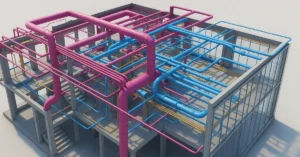Unveil the most underrated yet bold Brutalist buildings in Istanbul
Istanbul is best known for its centuries-old mosques, Byzantine churches, and Ottoman palaces. However, amid the domes and minarets lies a lesser-explored architectural chapter: brutalism. Brutalist buildings in Istanbul present a striking contrast to the city’s historical skyline. With bold concrete facades, geometric forms, and a focus on function over decoration, these structures mark a transitional period in Turkey’s urban development.
While not always embraced by the public, these buildings are increasingly being re-evaluated for their cultural, architectural, and historical significance. In this article, we journey through the most underrated brutalist buildings in Istanbul, exploring their origins, architectural elements, and their evolving perception in modern Turkish society.
Understanding Brutalism in Turkey’s Architectural Narrative
Brutalism emerged in the mid-20th century as a reaction to the ornamentation of previous eras, emphasizing function, honesty in materials, and social utility. Turkey, particularly in the 1960s to 1980s, experienced rapid urbanization and modernization. During this period, the need for public institutions, government buildings, and social housing was immense, and brutalism offered a practical yet impactful solution.
In Istanbul, brutalism often merged with local construction traditions and the unique geography of the city, resulting in distinctive adaptations. Unlike Western Europe, where brutalism was closely associated with post-war reconstruction, Istanbul’s brutalist movement symbolized state-driven modernization and institutional expansion.
Top Brutalist Buildings in Istanbul
1. Istanbul Radio House (TRT Istanbul) – Harbiye
Location: Harbiye, Şişli
Year: 1964
Architect: Doğan Tekeli and Sami Sisa
This structure is one of Istanbul’s earliest and most iconic examples of brutalist architecture. Characterized by massive volumes, vertical fins, and extensive use of raw concrete, the Istanbul Radio House stands as a monument to Turkey’s modernist ambitions during the 1960s. Its geometric façade and exposed materials emphasize the functional roots of brutalist design.
2. Atatürk Cultural Center (AKM) – Taksim
Location: Taksim Square, Beyoğlu
Original Year: 1969, Renovated in 2021
Architect: Hayati Tabanlıoğlu
Although the AKM has undergone significant reconstruction, the original 1969 building was a prime example of Turkish brutalism. Featuring blocky masses and a rigorous grid, the AKM functioned as Istanbul’s main opera and theatre venue. While the new structure has retained elements of the original form, much of the raw aesthetic has given way to a sleeker modernist vision.
3. Istanbul Justice Palace (Istanbul Adalet Sarayı)
Location: Şişli District
Year: 2011 (but influenced by late 20th-century Brutalism)
This massive judicial complex echoes brutalist principles in its heavy use of concrete, colossal scale, and minimal ornamentation. Despite being relatively modern, its fortress-like exterior and functional design pay homage to brutalist tradition. The building’s austere design complements its serious civic purpose.
4. Istanbul Technical University (ITU) Taşkışla Campus
Location: Maçka, Şişli
Renovations: 1960s–1980s expansions
While the original campus dates back to the 19th century, its mid-century expansions feature distinct brutalist traits. Several annexes, lecture halls, and research labs built during the modernization of ITU display characteristic blocky forms, overhanging slabs, and exposed concrete surfaces. These additions highlight Turkey’s emphasis on educational infrastructure during the Cold War era.
5. Istanbul Metropolitan Municipality Building – Saraçhane
Location: Fatih District
Year: Late 1980s
This government building features a stark, concrete-heavy design with functional windows and limited decorative elements. It reflects the pragmatic side of brutalist architecture. Though often criticized for lacking warmth, it remains a functioning hub of municipal governance and an example of bureaucratic brutalism.
6. Faculty of Political Sciences, Istanbul University
Location: Beyazit, Fatih
Year: 1970s
This building exemplifies institutional brutalism with its repetitive windows, strict geometry, and utilitarian interiors. Designed for functionality and capacity, it symbolizes the growth of higher education and administrative reform in the Turkish Republic. Today, it stands as a contested landmark among preservationists and modernizers.
7. Istanbul University-Cerrahpaşa Campus
Location: Cerrahpaşa, Fatih
Expansion Years: 1970s–1980s
Several hospital and administrative blocks within the Cerrahpaşa campus represent brutalist ideals. With rigid lines and unornamented facades, they reflect a focus on utility and fast-track construction that defined Turkey’s public health investments during the late 20th century.
Why Brutalism Flourished in Istanbul
Istanbul in the mid-to-late 20th century was undergoing transformative change. Population growth, migration from rural areas, and economic shifts called for mass construction of housing and public buildings. Brutalism’s promise of rapid, affordable, and scalable development made it a natural fit.
Moreover, brutalist buildings were seen as symbols of progress. Unlike Ottoman revivalist styles that looked backward, brutalism pointed toward a future of scientific advancement, equality, and national modernization. In a politically volatile period, architecture served as an expression of ideological commitment.
Public Sentiment and Architectural Debate
Much like in other parts of the world, Istanbul’s brutalist buildings face divided opinions. Critics argue that these structures are cold, impersonal, and incompatible with the city’s humanistic urban fabric. However, defenders see them as valuable historical artifacts that capture the tension and ambition of a nation in flux.
In recent years, interest in brutalist aesthetics has surged among younger architects and urban enthusiasts. Online communities, architecture walks, and photography exhibitions have helped reignite appreciation for these concrete colossi. There is also a rising awareness about the ecological and cultural cost of demolishing such buildings in favor of newer developments.
Preservation vs. Demolition: The Brutalist Dilemma
Many brutalist buildings in Istanbul are under threat due to urban renewal projects, gentrification, and neglect. Their maintenance is often expensive, and public officials may prefer replacing them with glass-and-steel commercial complexes.
Yet architectural historians and NGOs advocate for adaptive reuse. Transforming old brutalist structures into museums, art spaces, or co-working hubs can extend their life and purpose. In doing so, Istanbul can retain its layered history rather than flattening it in the name of modernity.
Brutalism and Istanbul’s Architectural Diversity
What makes brutalism in Istanbul particularly intriguing is its juxtaposition with Byzantine, Ottoman, and contemporary styles. Nowhere else can you find a brutalist block next to a neo-classical school or an Ottoman mosque. This eclectic mix tells a story of a city that has never stopped evolving.
Brutalism may not conform to traditional beauty standards, but its defiance, clarity, and robustness resonate with Istanbul’s resilient spirit. These buildings, often hidden in plain sight, invite exploration and reinterpretation.
Conclusion
Brutalist buildings in Istanbul are often overlooked but deserve a prominent place in the city’s architectural narrative. They offer more than just concrete walls; they represent a period of experimentation, transformation, and bold vision. While not always loved, they are increasingly being acknowledged as essential parts of the urban fabric.
Preserving these structures means preserving a moment in time when Turkey looked to architecture not just for shelter, but for statements of progress and ideology. With proper care and creative reuse, these buildings can continue to serve Istanbul’s ever-changing skyline and cultural consciousness.
If you’re interested in learning more about architecture firms in Europe, check out this comprehensive list of the top 50 firms compiled by Archgyan. From innovative startups to long-established industry leaders, this list has it all. Take a look and discover some of the most inspiring and influential architecture firms in Europe today.
If you’re interested in architecture and want to learn more about this amazing field, subscribe to our podcast on youtube
For more SketchUp tutorials, head to https://www.sketchupguru.com










